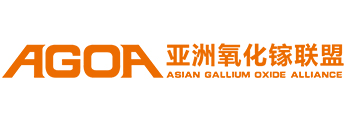

【Member Papers】Study on thermal transport properties of Si/SiC based β-Ga₂O₃ heterogeneous integration wafers with high thermal conductivity by a research team at SIMIT
日期:2024-05-10阅读:1001
1、Work Introduction
Shanghai Institute of Microsystems and Information Technology, Chinese Academy of Sciences heterogeneous integration XOI research group prepared three kinds of wafer-level heterogeneous integration materials, β-Ga2O3−Al2O3−Si (GaOISi),β-Ga2O3−SiC (GaOSiC) and β-Ga2O3−Al2O3−SiC (GaOISiC) based on "universal ion knife" stripping and surface activation bonding technology. Achieved higher thermal conductivity and lower effective interface thermal resistance through post-annealing process, showing excellent thermal performance. Related research results to "Thermal Transport Properties of β‑Ga2O3Thin Films on Si and SiC Substrates Fabricated by an Ion-Cutting Process "is published online in the journal ACS Applied Electronic Materials. The co-first authors of the paper are Xu Wenhui, postdoctoral fellow, Zhao Tiancheng, graduate student, and Zhang Lianghui, graduate student, Harbin Institute of Technology (Shenzhen), respectively. The corresponding authors are You Tiangui and Ou Xin, research fellows, Shanghai Institute of Microsystems, and their collaborators are Professor Sun Huarui, Harbin Institute of Technology (Shenzhen), and Professor Han Genquan, Xidian University.
2、Background of Research
β-Ga2O3 has been widely concerned in the field of power electronics due to its ultra wide band gap of 4.9 eV, extremely high breakdown voltage, excellent thermal stability and the prospect of low cost mass production. However, the thermal conductivity of β-Ga2O3 (only 10-30 W/m·K) is low, and the near-junction temperature of the power device will rise significantly due to the self-heating effect. The heterogeneous integration of β-Ga2O3 with high thermal conductivity substrate (such as SiC or diamond) is one of the effective solutions to solve the heat dissipation problem. At present, there are mainly three feasible methods: mechanical stripping, heteroepitaxial growth and ion beam stripping technology. Mechanical stripping can only prepare micron-sized β-Ga2O3 sheets, and the tape transfer process is not compatible with traditional semiconductor equipment and is not suitable for wafer-level manufacturing. Heteroepitaxial growth requires overcoming defect and twin problems caused by lattice/thermal mismatch between β-Ga2O3 and high thermal conductivity substrate. Ion beam stripping is compatible with wafer bonding and ion implantation equipment and has been used in industrial applications for SOI wafers, making it best suited for mass production of heterogeneous integration β-Ga2O3 wafers. In previous work, the heat transport properties of GaOISiC with an intermediate Al2O3 amorphous layer of 20 nm thickness were investigated by transient thermal reflection (TTR) measurements. The thermal transport properties of heterogeneous integration materials are mainly affected by the thermal conductivity of β-Ga2O3 films, the effective interfacial thermal resistance (TBReff) of the heterogeneous host substrate and the interfacial layer. The value of TBReff largely depends on the thickness and thermal conductivity of the amorphous layer as well as the bonding strength. In addition, although the thermal performance of β-Ga2O3 heterogeneous integration materials can be significantly improved by combining with highly thermally conductive SiC, SiC materials are expensive. Silicon wafer not only has good thermal conductivity, but also has the advantages of low cost and high compatibility with CMOS technology, and is a more promising host substrate for β-Ga2O3 heterogeneous integration materials.
3、Research highlights
In this work, the heat transfer characteristics of β-Ga2O3 heterogeneous integration materials are systematically analyzed from different aspects, including substrate type, TBReff value and annealing conditions. By comparing the heat transfer characteristics of GaOSiC and GaOISiC before and after annealing, the influence of amorphous Al2O3 interlayer is clarified. In addition, the heat transfer characteristics of just transferred (AT) and post-annealed (PA) GaOISi are also studied to prove the heat dissipation capacity of GaOISi devices. Finally, a thermal model of metal-oxide semiconductor field-effect transistor (MOSFET) based on β-Ga2O3 heterogeneous integration materials is established to evaluate the effects of different TBReff values and substrates on heat dissipation, which will provide guidance for critical TBReff values and suitable substrates for thermal management of β-Ga2O3 heterogeneous integration materials.

FIG. 1 (a) Preparation process of β-Ga2O3 heterogeneous integration material; (b) Schematic diagram of sample structure and thermal reflectance measurement method; (c) normalized transient thermal reflectance curves of GaOSiC-AT and GaOSiC-PA, with dotted lines representing GaO bulk and SiC bulk respectively; (d) Comparison of normalized transient thermal reflectance curves of GaOSiC and GaOISiC before and after annealing.
The hindering effect of the intermediate amorphous Al2O3 layer on heat dissipation from β-Ga2O3 to SiC has been greatly alleviated by the post-annealing process. It was also found that Al2O3 layer prevented the interdiffusion of elements between β-Ga2O3 and host substrate, thus avoiding the decrease of thermal conductivity of β-Ga2O3 after post-annealing. Thus, the thermal conductivity of β-Ga2O3 film up to 9.3 W/m·K was achieved.

FIG. 2 (a) Comparison of thermal conductivity of β-Ga2O3 films in GaOSiC, GaOISiC and GaOISi heterogeneous integration materials before and after annealing; (b) thickness-dependent thermal conductivity of β-Ga2O3 films prepared by different methods. The dashed blue line indicates the thermal conductivity of the β-Ga2O3 bulk at the orientation of (-201); (c) Comparison of TBReff in GaOSiC, GaOISiC and GaOISi heterogeneous integration materials before and after post-annealing.
According to the thermal simulation results, the thermal resistance of β-Ga2O3 heterogeneous integration MOSFET decreases by 1 to 2 orders of magnitude, indicating that the method of high thermal conductivity substrate integration and effective interface thermal resistance optimization can achieve efficient heat dissipation. These results provide important guidance for the design of thermal transport properties of β-Ga2O3 heterogeneous integration materials for device thermal management. 
Figure 3. (a) Schematic structure of a β-Ga2O3 MOSFET; (b) the simulated peak temperature of β-Ga2O3 MOSFET based on β-Ga2O3, Si, AlN, SiC and diamond substrates; (c) the simulated peak temperature rise of β-Ga2O3 MOSFET varies with the change of TBReff on different substrates; (d) the simulated peak temperature rise of β-Ga2O3 MOSFET varies with the power applied on different substrates.
4、Summary and Outlook
The heterogeneous integration of Gallium Oxide and high thermal conductivity substrate is the key method to solve the heat dissipation of Gallium Oxide devices. In this paper, it is found that silicon-based Gallium Oxide not only has excellent heat dissipation ability, but through high temperature annealing and dielectric layer bonding, the thermal conductivity is close to that of bulk materials, and the interface thermal resistance is reduced to less than 10 m2K/GW. At the same time, combined with the lower preparation cost, it is conducive to promoting the market application of low-cost and high thermal conductivity Gallium Oxide heterogeneous integration materials and devices.


